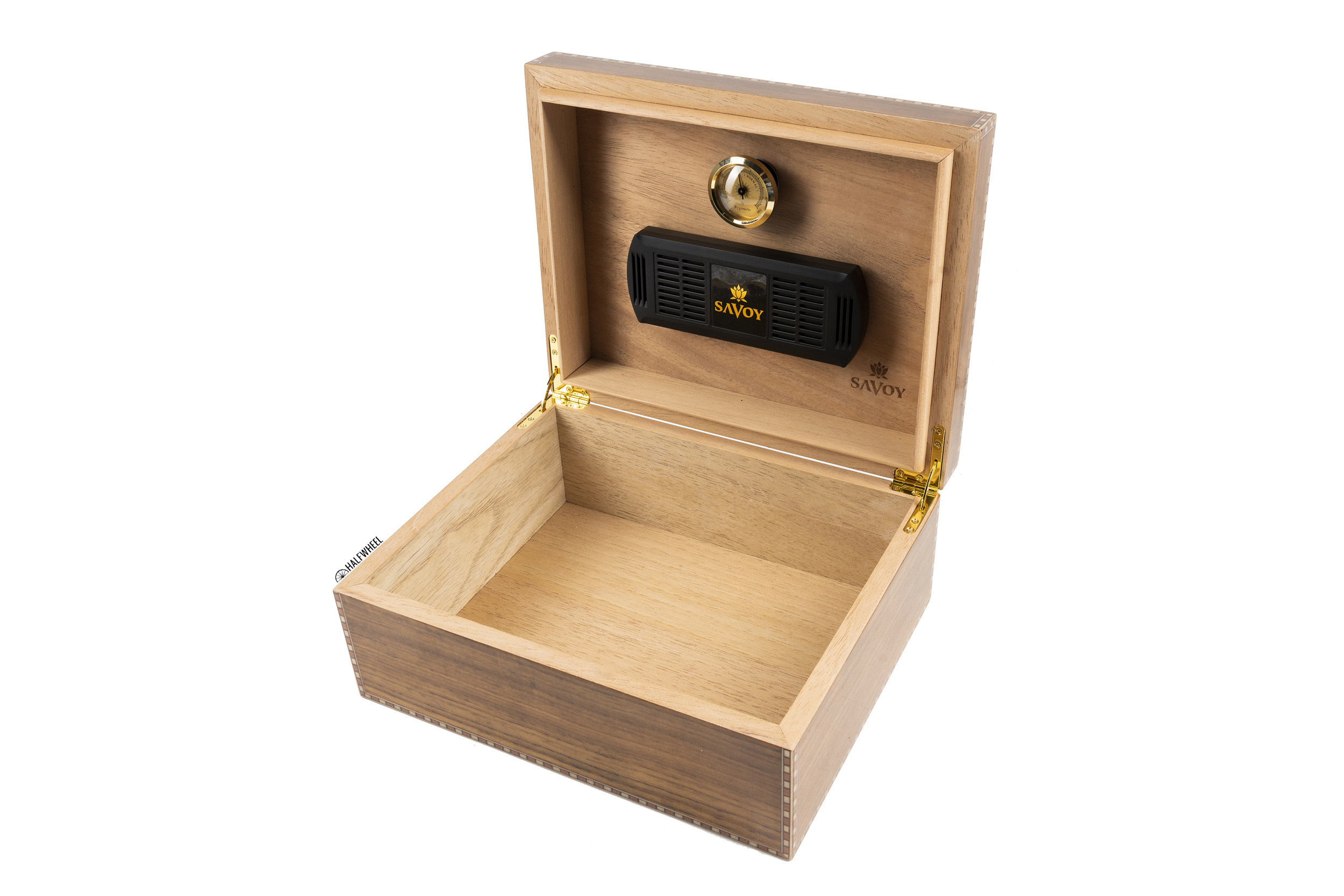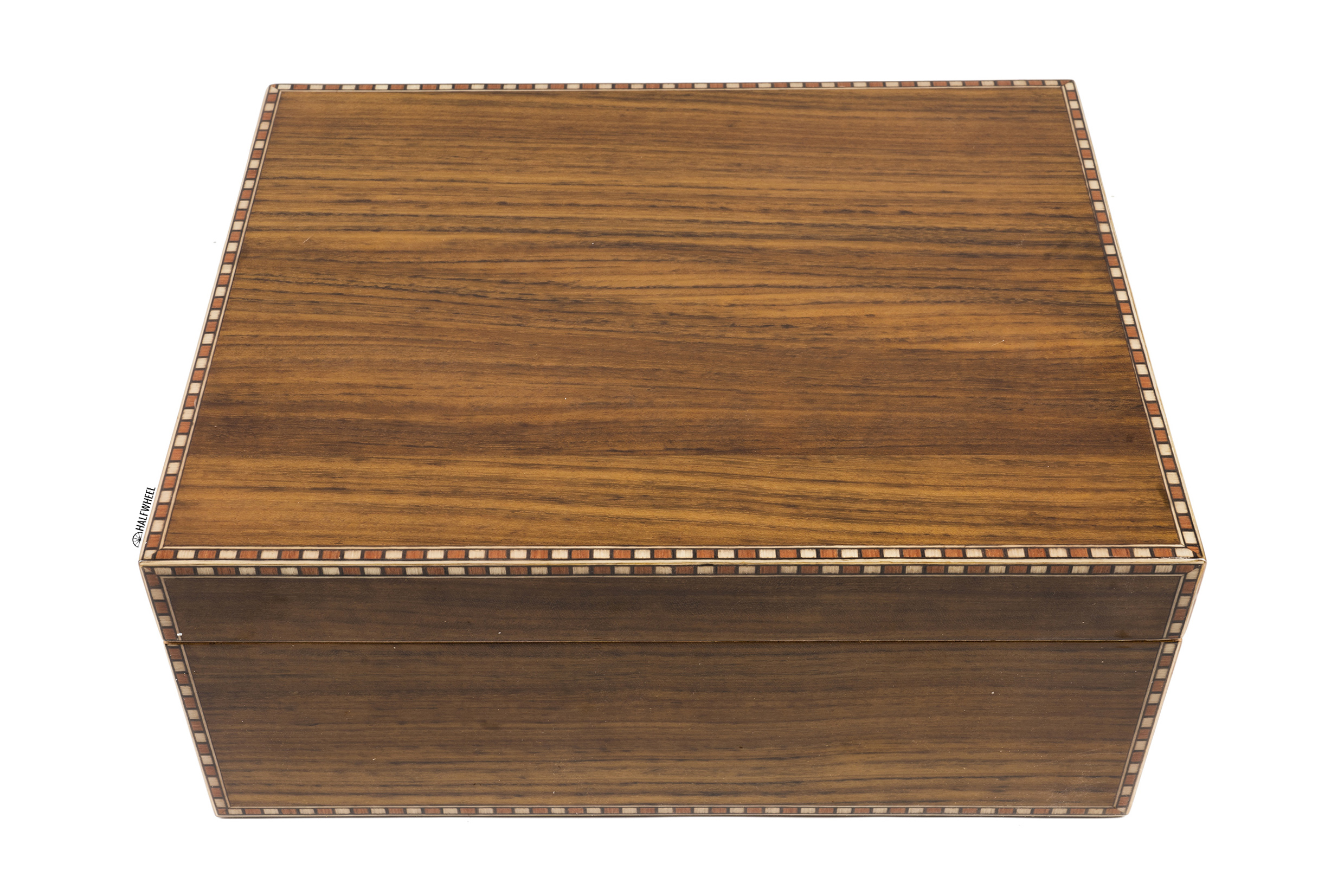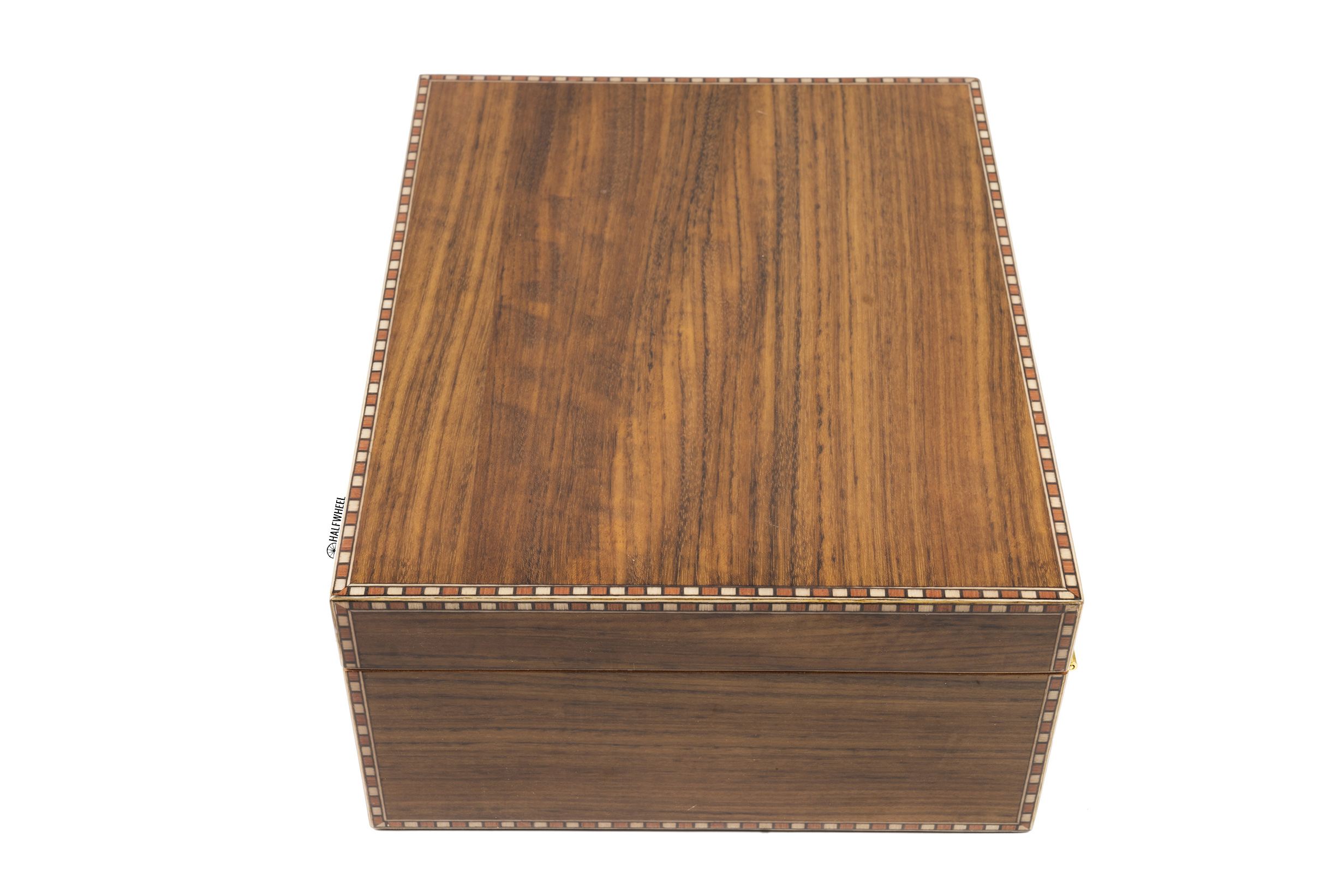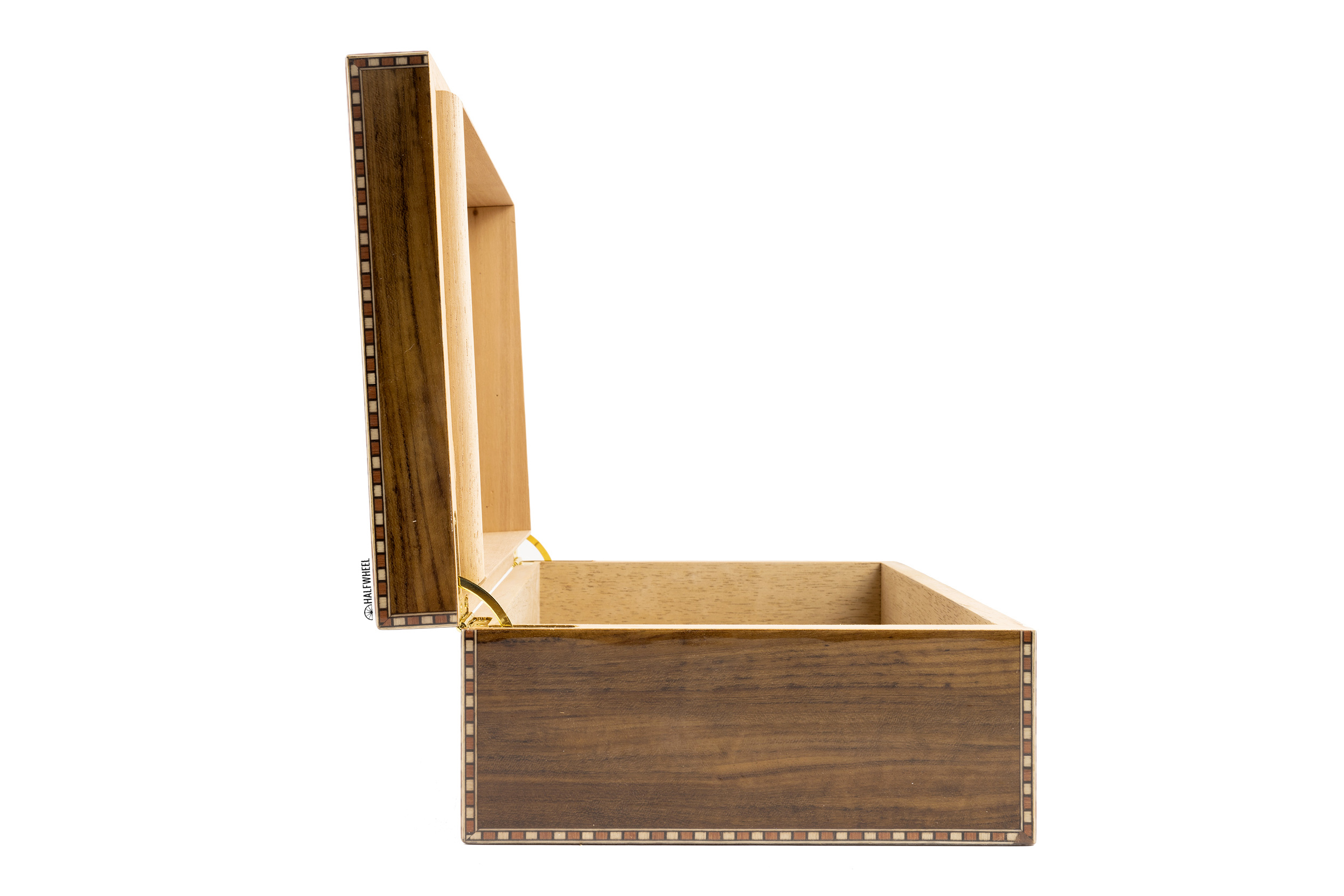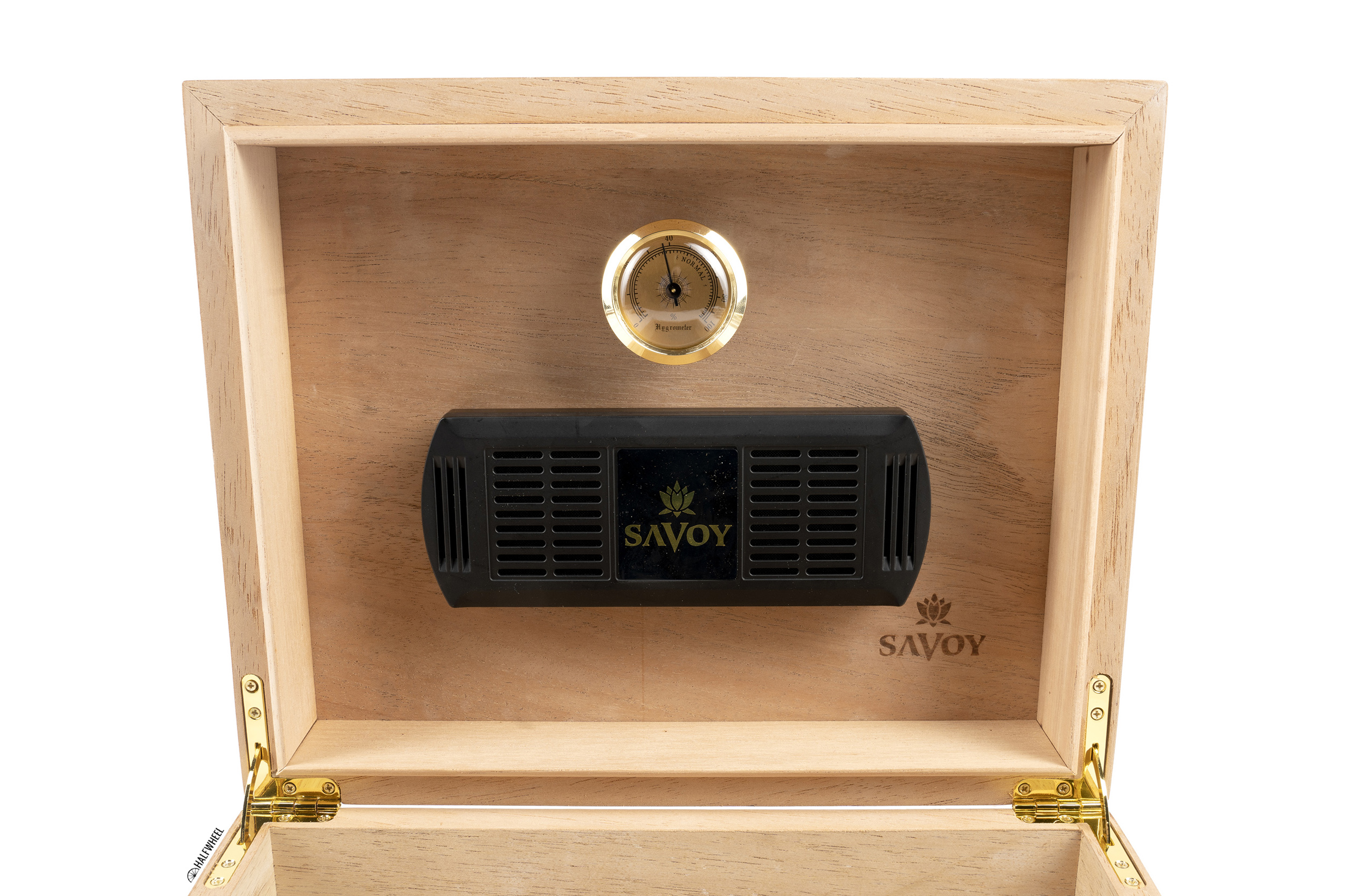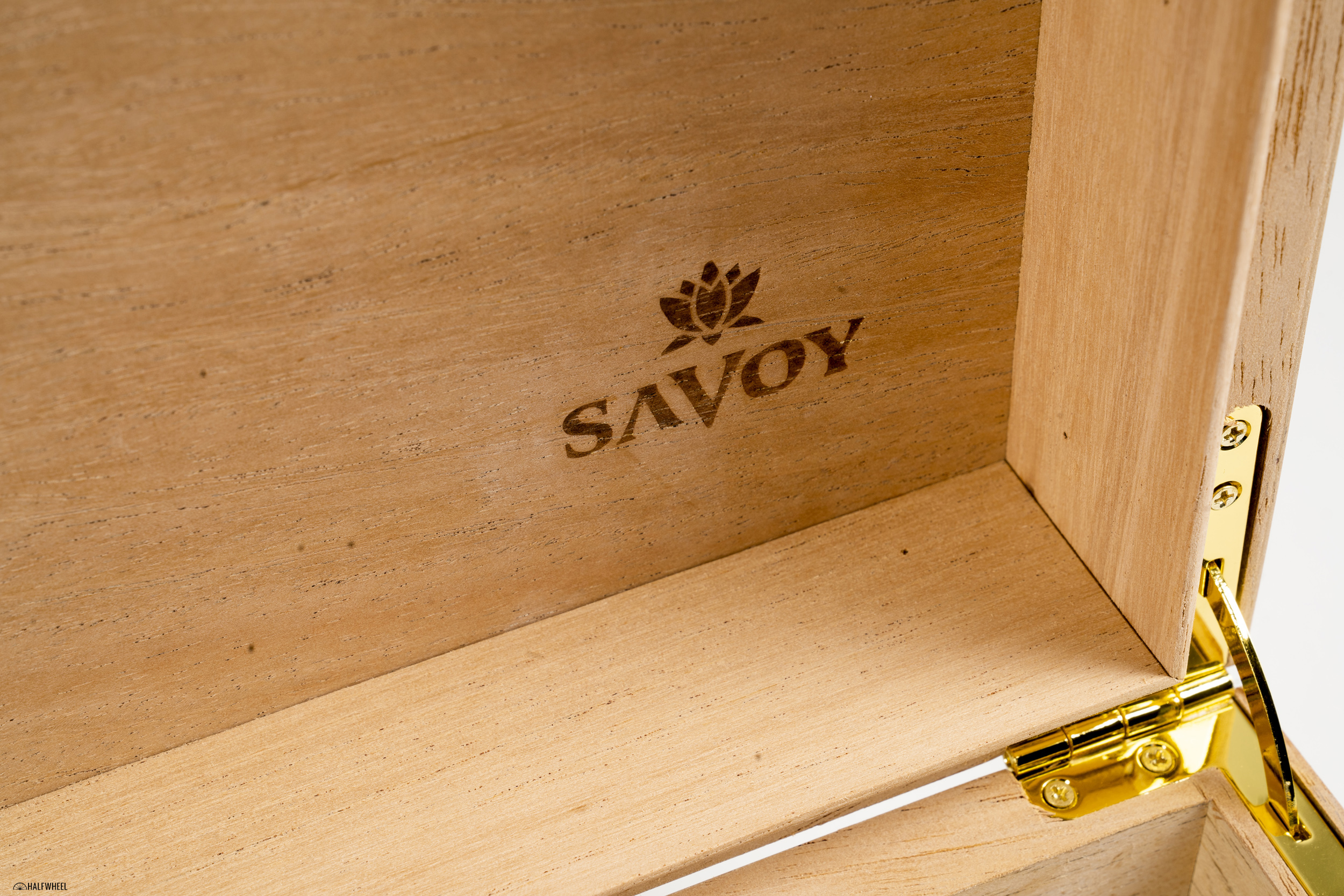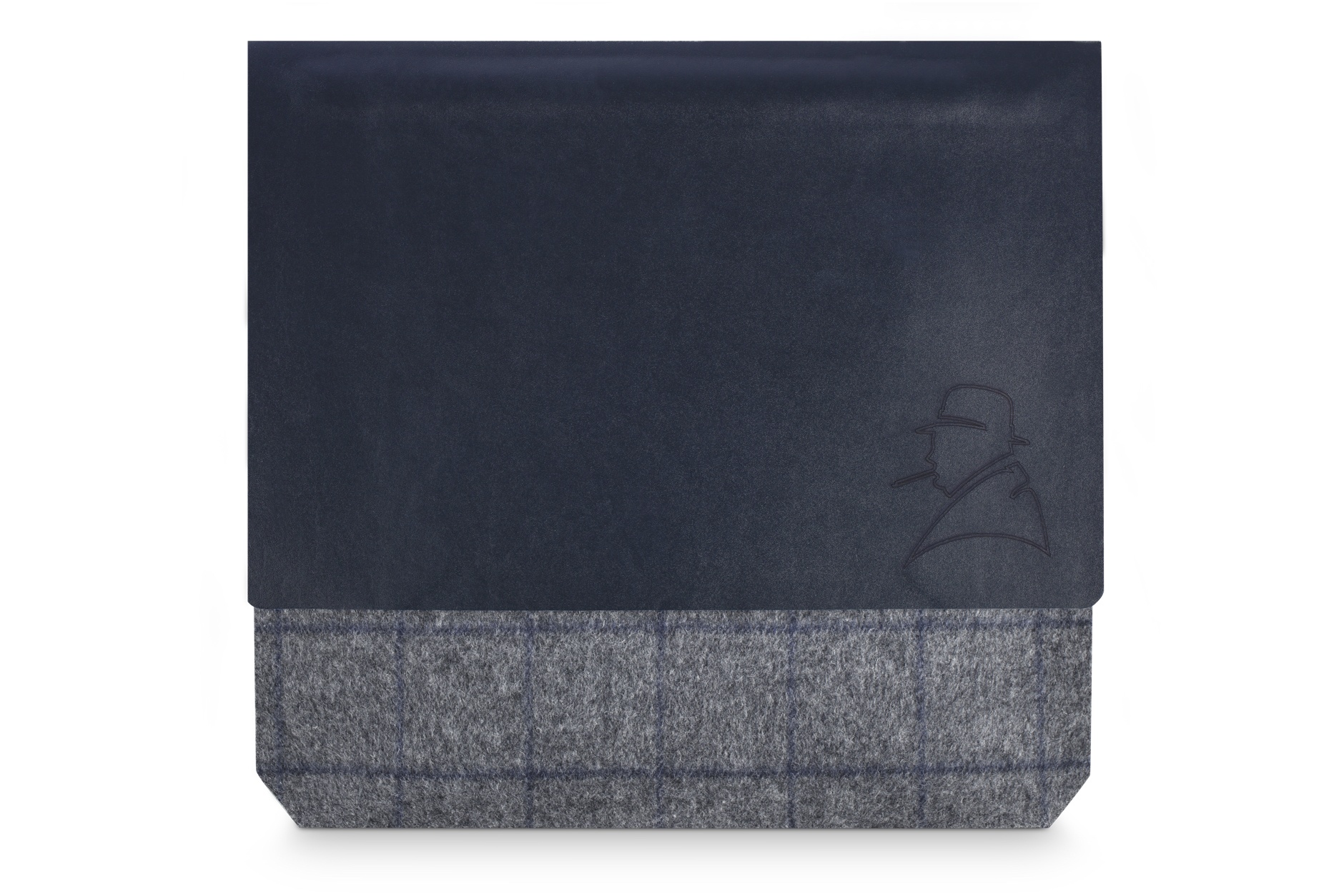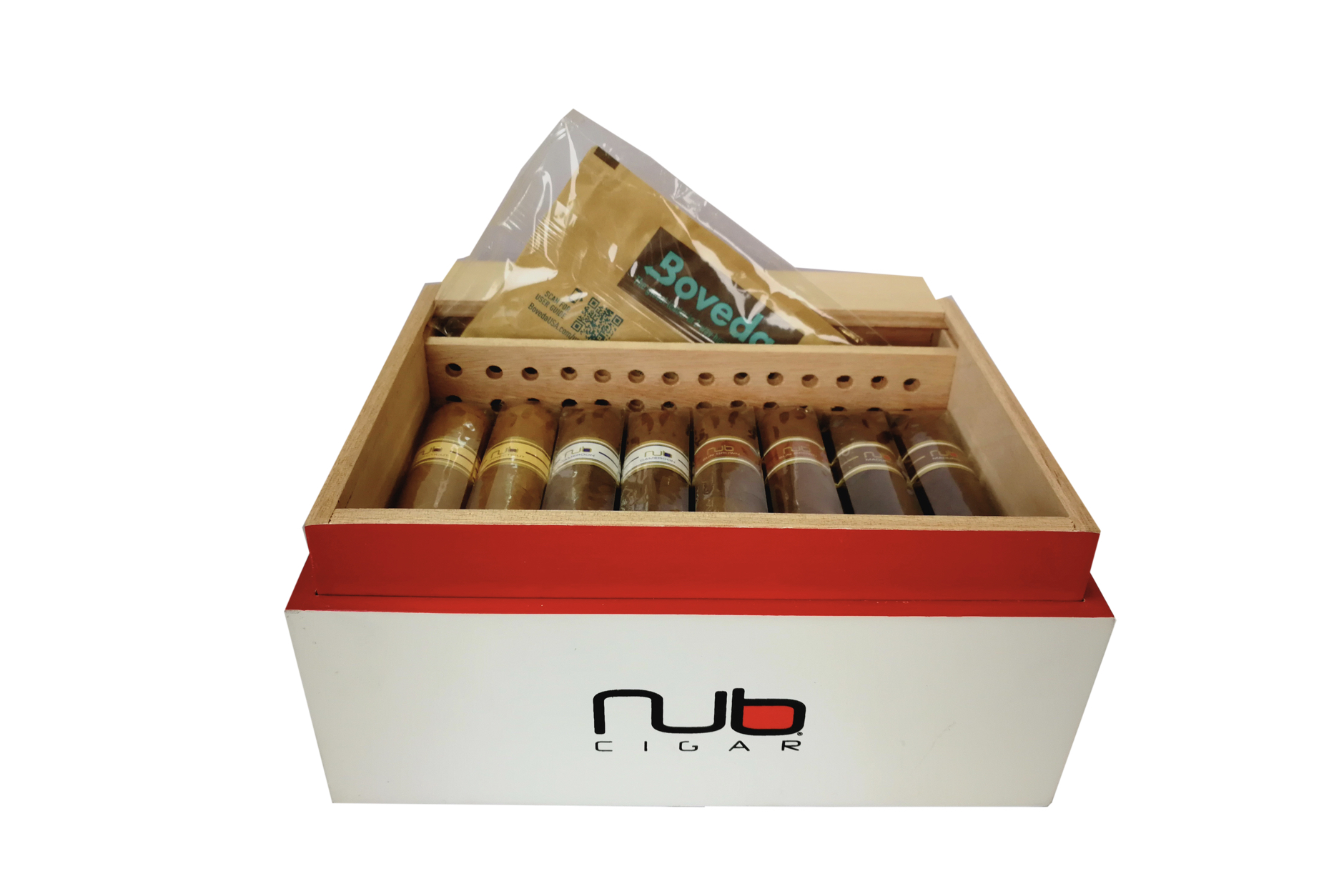About six months ago I was trying to figure what humidor to buy for my next review. I ended up buying seven.
It’s not that I wanted seven more humidors, rather, I wanted to try to figure out if there was a humidor I could recommend to most people. Specifically, I wanted to see if I could find what I imagine is the most requested humidor: one that looks like a traditional wooden humidor, can hold around 100 normal-sized cigars and costs around $100.
I then went looking and realized that wasn’t going to go well. Just looking at pictures of humidors that met those qualifications didn’t inspire confidence, so I modified the parameters: it needs to look like a traditional humidor, hold around 75 cigars and cost no more than $175 before tax and shipping.
This is the first review of these humidors, with subsequent reviews hopefully getting published every other week or so for the next four months. Once the seven had arrived at the office, I randomly picked the order for the reviews, and first up is one that makes for a very logical starting point: the Savoy Marquis.
WHAT IS IT?
Savoy is Ashton’s humidor brand, which makes it a brand that you are likely to find on the shelves of a good number of U.S. retailers. Ashton divides its humidors into two categories; there’s the regular Savoy brand and then the upgraded Savoy Executive, which is a really good humidor and a longtime favorite of mine.
Like most humidors from Ashton, there are multiple sizes of the Savoy. Ashton designates them as follows:
- Small (10 1/4 inches x 8 3/4 x 4 1/2) — 25 Cigars
- Medium (11 3/4 x 9 1/2 x 5) — 50 Cigars
- Large (13 1/2 x 9 3/8 x 6 1/4) — 100 Cigars
The large model is notably different as it includes both a tray and an exterior lock and key, two features not found on the two smaller sizes.
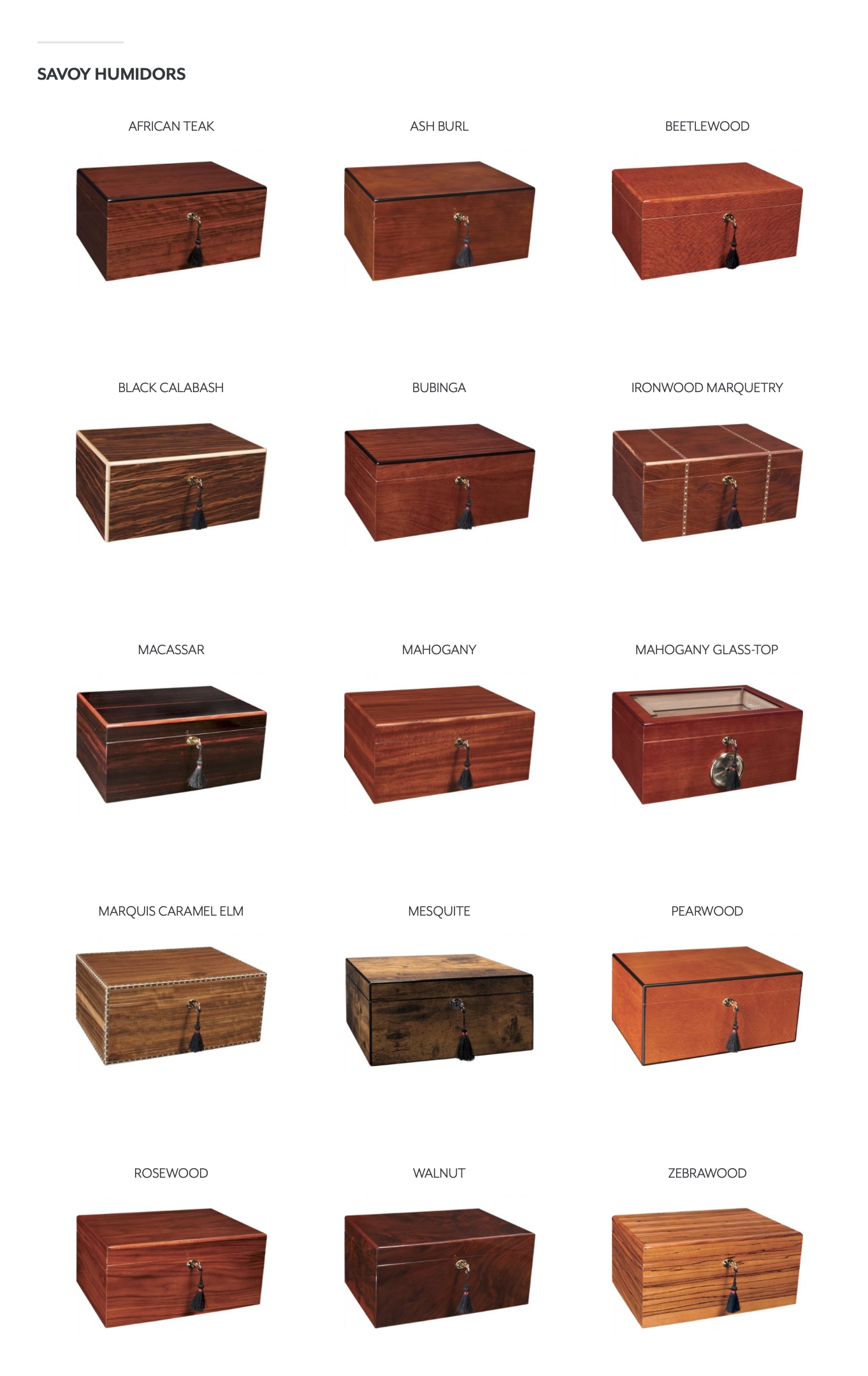
From what I found on the Ashton Distributors website, there are 14 different wood options for the Savoy line. Some models also include an Extra Large (15 7/8 x 12 x 8 1/8) size rated for 150 cigars. Outside of the Mahogany Glass Top, I’m guessing that these are all more or less the same humidor just with different finishes, but I haven’t individually inspected all the different models.
HOW MUCH DOES IT COST?
We paid $111.95 before tax and shipping.
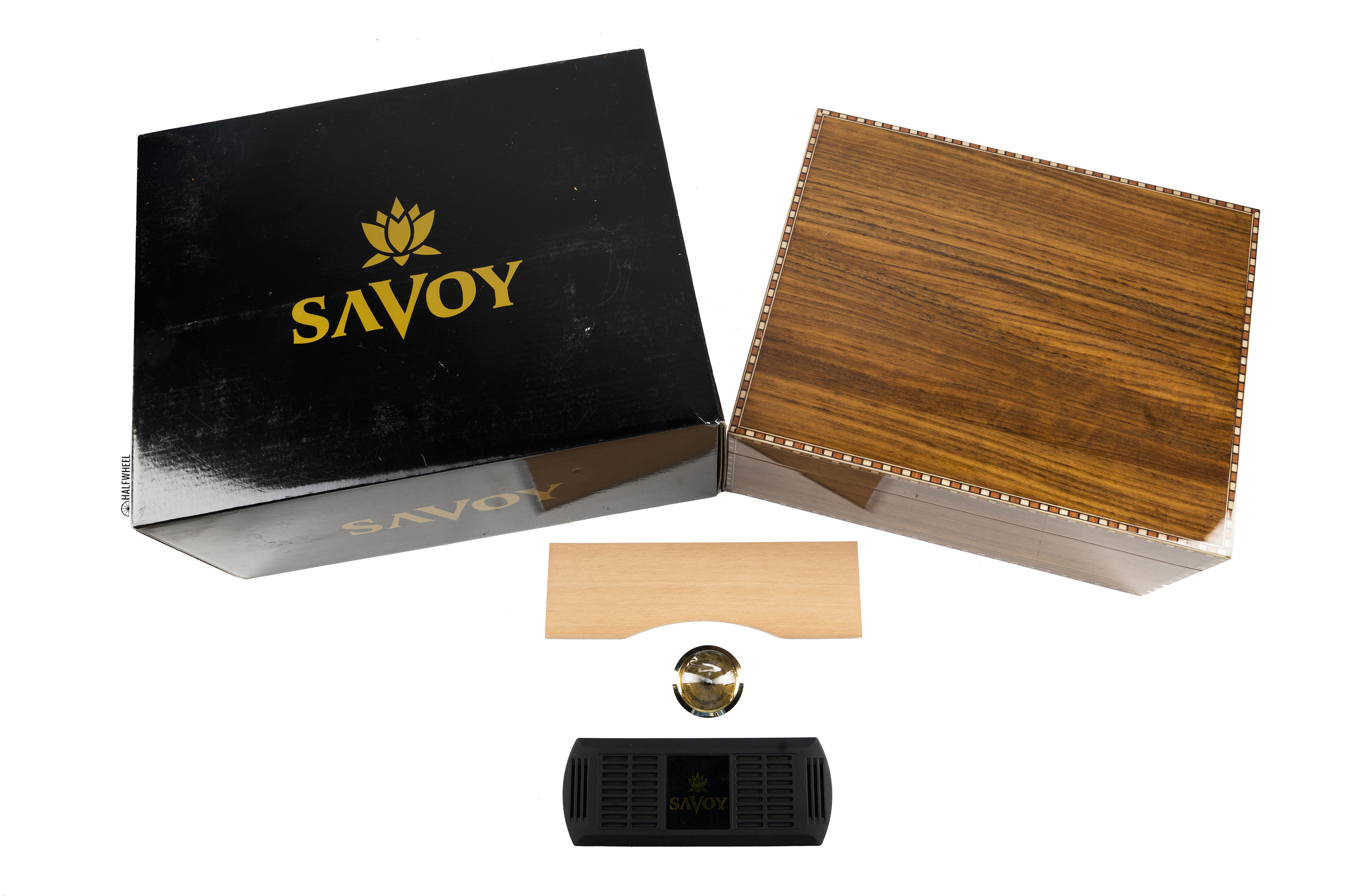
WHAT’S INCLUDED?
There’s the humidor itself, a divider, an analog hygrometer and a Savoy Humidification Device, which uses florists’ foam inside.
Here are my thoughts on florists’ foam, which aren’t specific to how Savoy uses it:
Florists’ foam is the traditional humidification method, it’s a green-colored foam that can also be used to keep plants hydrated, hence the name. Humidor manufacturers will place them inside of plastic or metal containers and then recommend you use some sort of combination of distilled water and propylene glycol. The use of propylene glycol—usually recommended in a 50/50 mixture with distilled water—is that it can help to reduce mold and, in theory, absorb excess humidity, specifically excess humidity over 70 percent relative humidity.
Over the years, I haven’t found this to be particularly effective and there seems to be some evidence that more propylene glycol is needed to maintain 70 percent relative humidity at 70 degrees Fahrenheit. For this testing, I used the regularly recommended 50/50 method.
There are three magnets already installed into the lid of the humidor: one for the hygrometer and two for the humidification device.
HOW LARGE IS IT INSIDE?
The inside of the bottom part of the humidor is roughly 10.75 inches wide, 8.45 inches deep and 3.67 inches tall. Per Humidor Discount’s dimension calculator, that should hold 63 robustos, which is more of a rating of the interior dimensions than a guide. You can probably fit a few more cigars as there’s a bit of extra room in the lid, but not many.
THE TESTING PROCESS
Given that I have seven humidors to compare against one another, I decided to come up with a testing process for all of them. I wanted to test the humidors both as they are sold and also with some of the variables removed so I could test the quality of the boxes themselves.
All humidors had a brand new and freshly calibrated SensorPush device inside for all parts of the test. The SensorPush is a digital device that measures both the temperature and relative humidity, and then sends that data to a smartphone app where it is stored on a minute-by-minute basis. (The SensorPush is not included in any of these humidors.)
That is as follows:
- Seasoning — Two weeks of seasoning with a new sponge soaked in distilled water placed on a plate inside the humidor. The sponge was re-soaked after the first seven days and then removed once the two week period was complete. Seasoning a humidor is a process to add moisture to the wood. If you don’t do this process, you run the risk that the wood will be dry and will suck the moisture from both the humidifier and the cigar. This can lead to months of frustration, and worse, dried out cigars.
- Included Humidifier — Four weeks of the humidor used with the included humidifier with no cigars and without opening the lid. This is intended to test the humidor as the manufacturer sends it. Once this was done, I removed the included humidifier and moved on to step three.
- Boveda — Six weeks of the humidor used with three Boveda 60 gram packs (69 percent) with no cigars and without opening the lid. This is intended to test the humidor’s performance without the variability of how well the included humidifier works.
- Dry Cabinet — Two weeks of the humidor with nothing but the SensorPush inside placed inside of an electronic dry cabinet set at 36 percent relative humidity. The dry cabinet allows for me to control the ambient relative humidity, meaning that I can measure humidity loss without having to worry about how much of that is related to the change in the outside air. This is done to test how well the humidor seals. It was done without a humidification device to get a clearer picture of moisture loss.
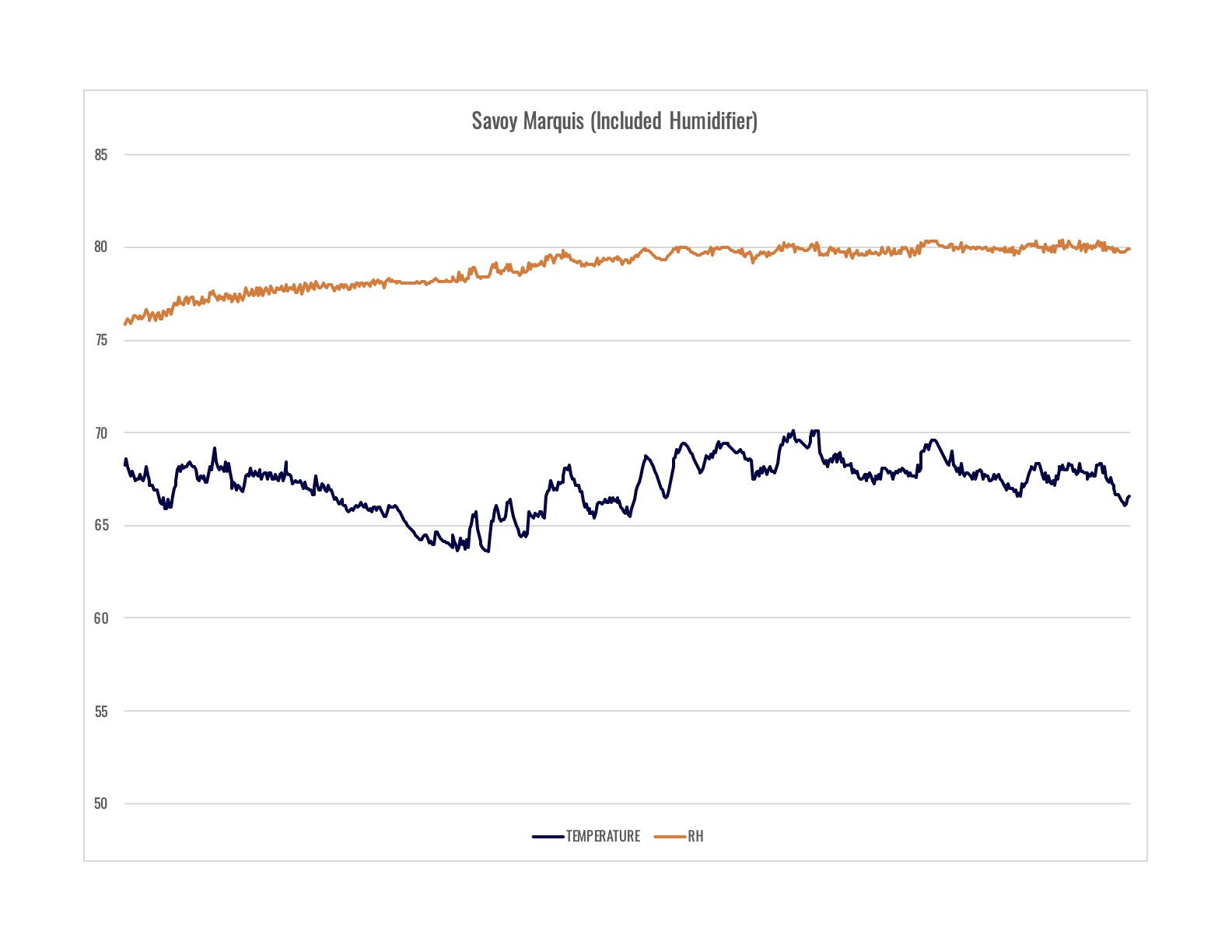
INCLUDED HUMIDIFIER
Not surprisingly, the humidifier that uses florists’ foam kept adding to the humidity after seasoning. Ashton says that this should be refilled every two weeks, which seems like an excessive amount for me.
For what it’s worth, the humidifier also developed some mold on it, something that isn’t surprising given that it spent nearly two weeks at 80+ percent relative humidity.
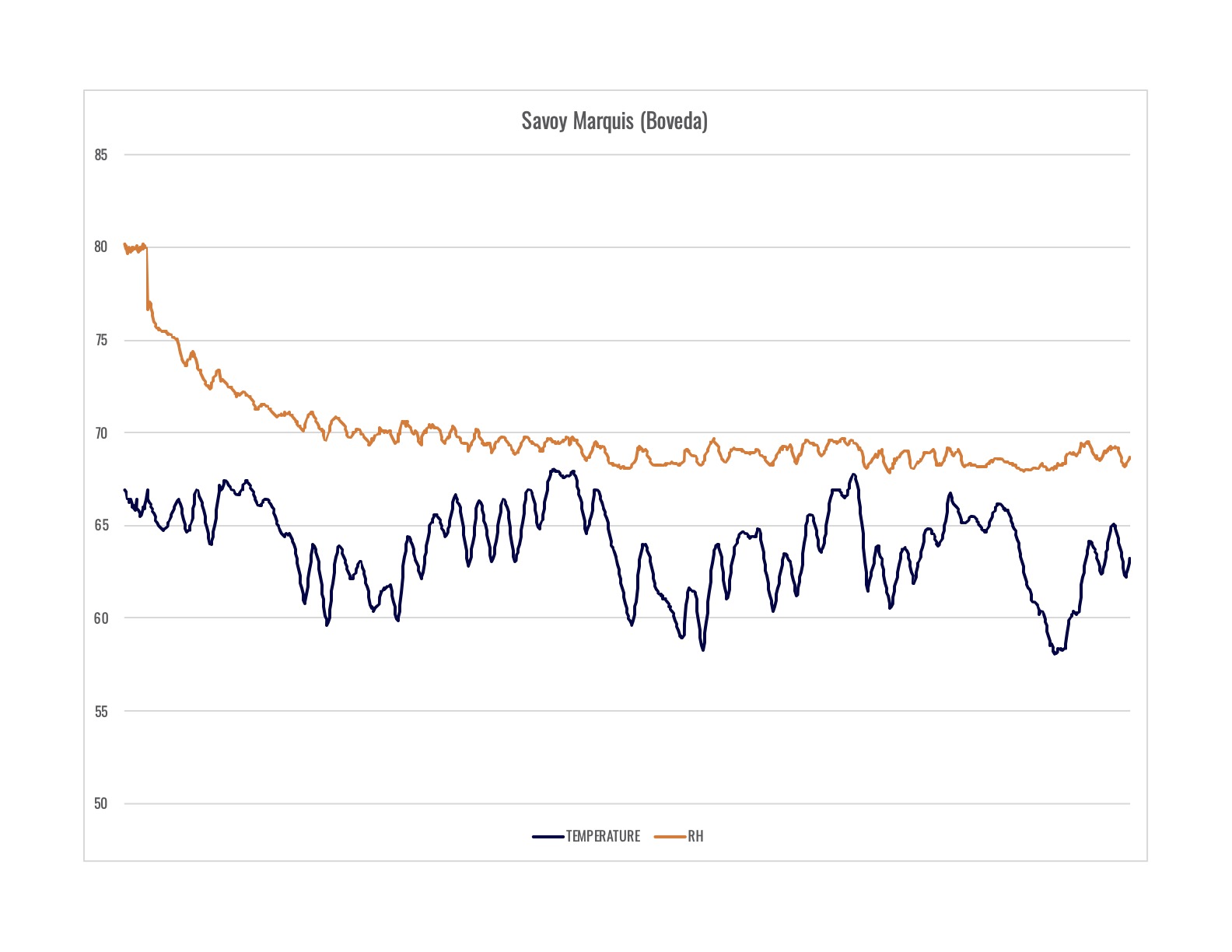
WITH THE BOVEDAS
That relatively stable orange line you see at the start is the first day or so of the Bovedas, where it was clear they were struggling to absorb the excess moisture from the four-weeks of the included humidifier. It took 48 hours of the Bovedas being inside before it dropped below 75 percent relative humidity. After another week, it was below 70 percent and got into the Boveda’s set level of 69 percent.
Given all of the excess humidity in the Savoy humidor I’m not really surprised by these results. I forgot to weigh the Bovedas coming out of the humidor but based on the above they probably came out heavier than what they went in given they were basically just acting as a way to remove moisture.
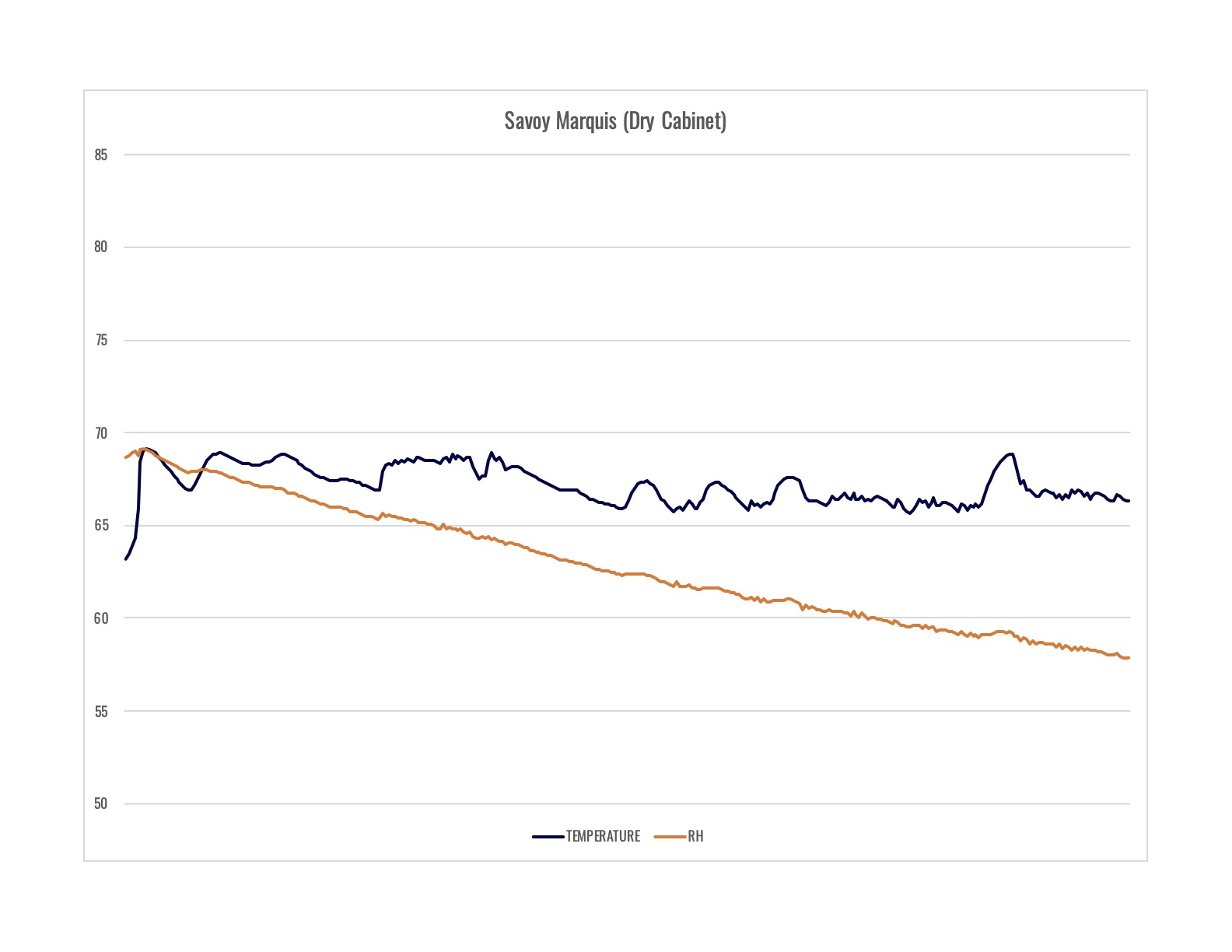
IN THE DRY CABINET
The Savoy lost close to 16 percent in relative humidity during its two weeks in the dry cabinet. I’m not exactly sure what to make of this in comparison to the other humidors that have gone in the dry cabinet because the Savoy is the only one that went into the box at a number above 60 percent relative humidity, let alone one close to 70 percent. In short, the Savoy has just had much more humidity to lose compared to the others.
What is clear is that the Savoy doesn’t seal well. More on that below.

THE GOOD
- This Looks Like a Humidor — Whenever anyone asks me how to store cigars, I will tell them to put them in a plastic bag with a Boveda or a plastic bin with some Boveda packs. There was a time when the best technology for humidifying cigars was one that involved Spanish cedar. That’s no longer the case. If you want something that is airtight, buy something that’s airtight and remove the variable of having to season the wood. However, most people are looking for some combination of form and function. When it comes to form, this will satisfy most people’s needs.
- Magnets on the Lid — While the lid isn’t magnetic, I appreciate the included magnets for the humidifier and hygrometer, as that’s a step in the right direction.
- The Humidifier Seems Better Built Than Most — Amongst the seven humidors being tested, this was the nicest humidifier in terms of both feel and seemingly how well built it is. That being said, the internals are still problematic and I wouldn’t recommend using it. Still, credit to Ashton for not being as cheap as some of the other companies are with this device.
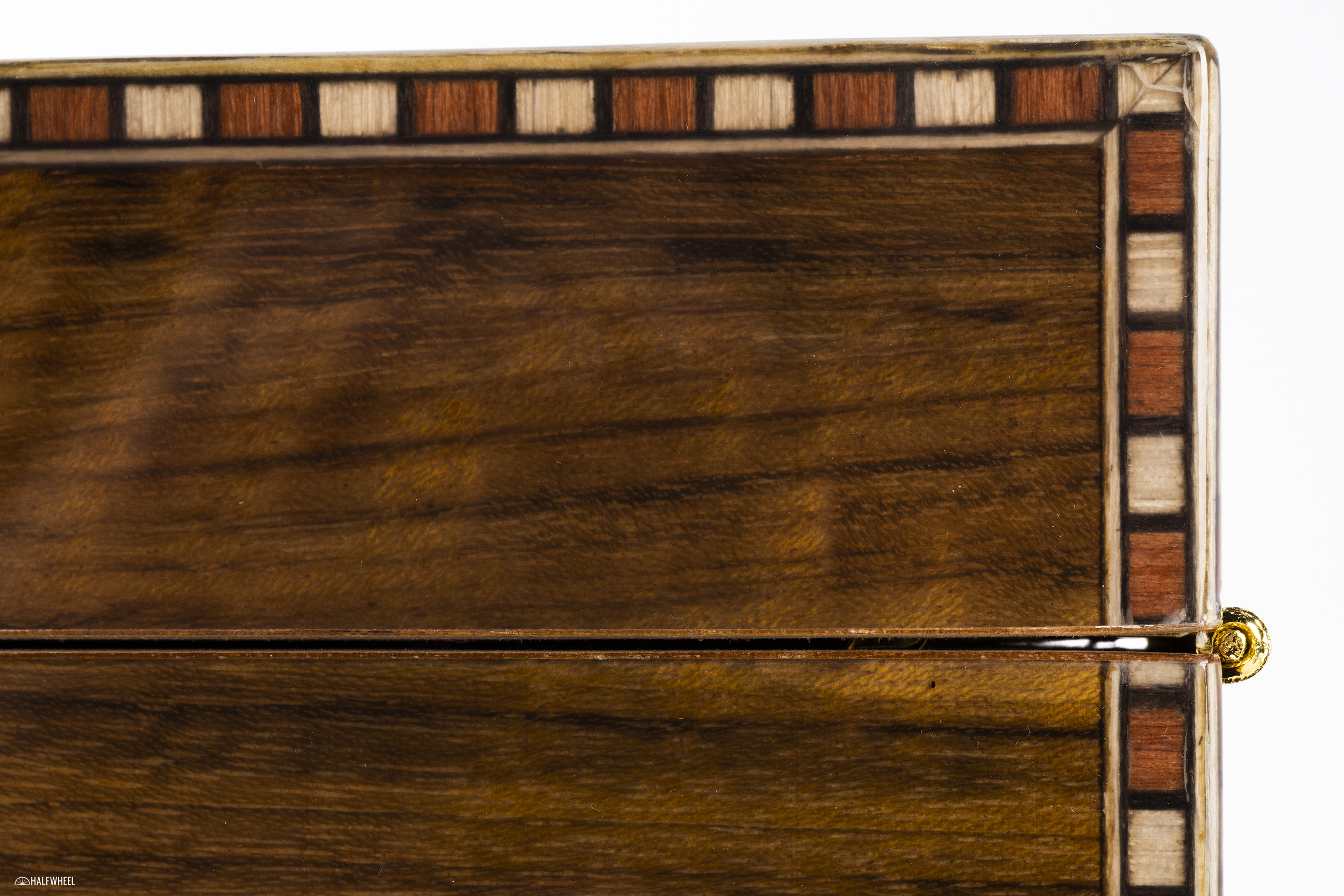
THE BAD
- Mind The Gap — The start and end of recommending the Savoy Marquis is in the picture above. On both sides of this humidor, there’s a visible gap that expands towards the back of the humidor. While the front is flush, by the back of the humidor it’s a wide enough gap that I can see the gold-colored hinge mechanism. This gap means no matter how well your humidification works, the humidor is always going to be leaking air.
- It Feels Too Light — It weighs around 4.4 lbs when empty, noticeably lighter than any of the other humidors we’ve tested. It just feels like it should be a bit heavier. That being said, I’d say the same thing about the weight of the Savoy Executive Humidor which remains one of my favorite humidors.
THE COMPETITION
As I mentioned above, I purchased seven humidors that I think are representative of this category and as such, direct competitors. I’ll update this review as testing is completed and those reviews get published. All of the prices for those humidors are the prices we paid before tax and shipping.
- Prestige Princeton ($134.55) — This is part of the sub-$175 humidor test. A full review is coming and I will update this review once that review has been published.
- Prestige Winchester ($149.95) — See above.
- Craftman’s Bench Havana 90-Cigar ($79.95) — See above.
- Yannabis Cigar Humidor ($159.99) — See above.
- Quality Importers Old World ($94.99) — See above.
- The Deauville Tobacco Leaf ($99.99) — See above.
- Boveda Large Acrylic Humidor ($180) — This humidor is just over the $175 price point but would otherwise be the recommended option. It’s a large, see-through plastic box with a removable tray that allows you to show off your cigars. More importantly, it’s plastic, which means you don’t need to worry about seasoning and really don’t need to worry about the seal. It just works. The issue with the Boveda is that it just doesn’t look like what most people think of as a humidor.
- Colibri Heritage Humidor ($495) — If you want a wooden humidor that is going to last, I think you are going to want to spend closer to $400. The Heritage Humidor can regularly be found at that price point and it’s just so much better in just about every way. It feels solid, it avoids the major manufacturing flaws and it has a much more modern look, albeit one that isn’t for everyone.
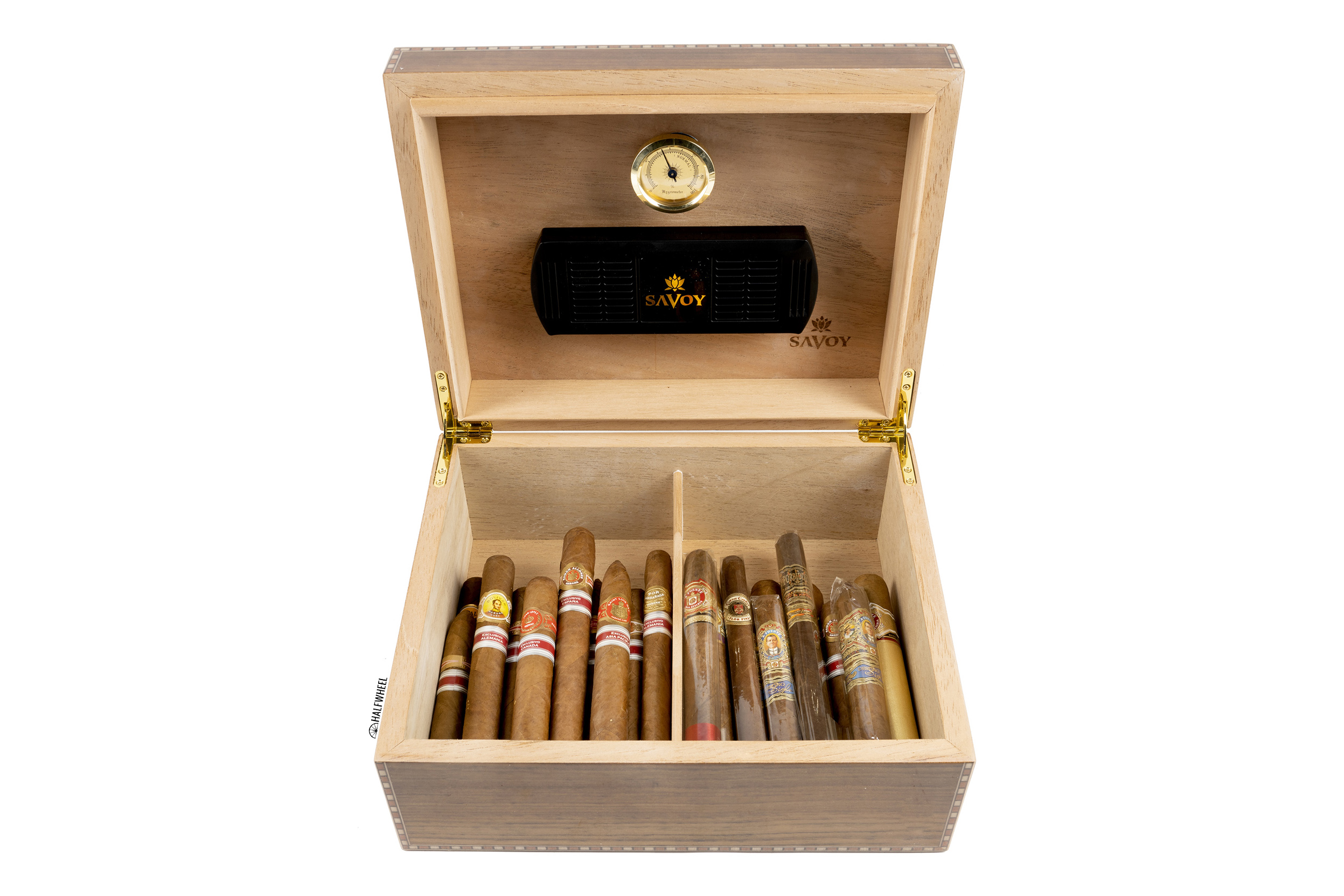
SHOULD YOU BUY IT?
No.
If you find one that doesn’t have the visible gap in the back, then it becomes a maybe, but the problem is that I tested one that has that gap and there’s just no way to recommend the humidor. That said, this is also a glowing recommendation for why you should buy your humidor in-person: much like a car, you can do a pre-purchase inspection to make sure you aren’t about to spend money on something that is never going to work.
The humidor for this review was purchased by halfwheel.

